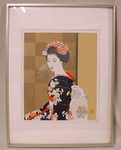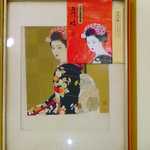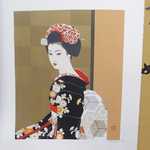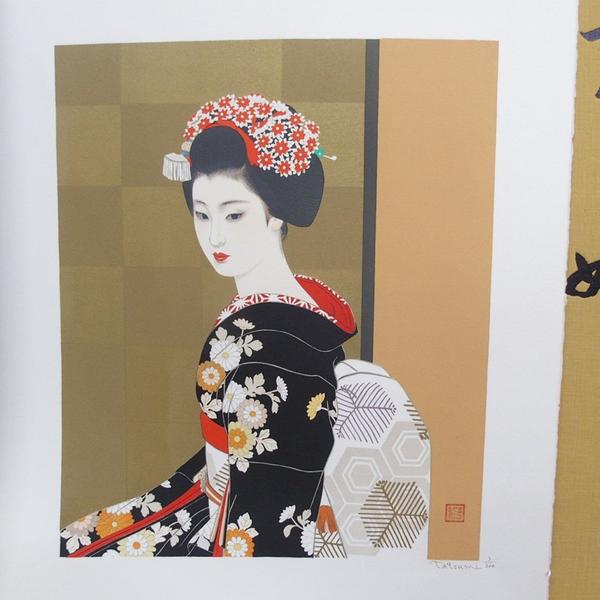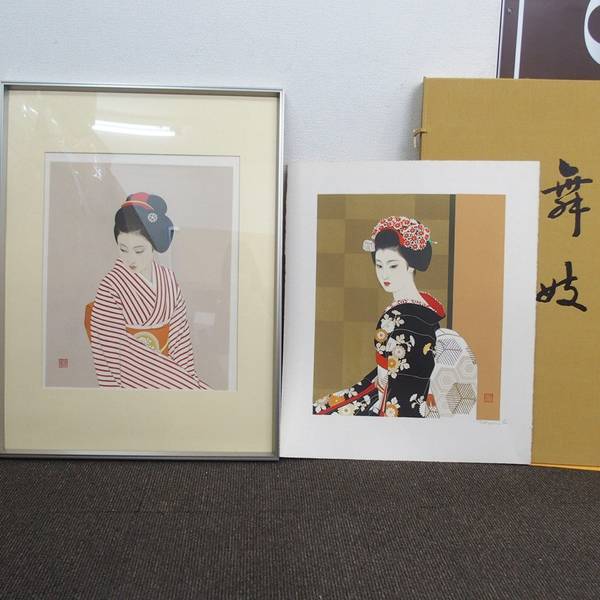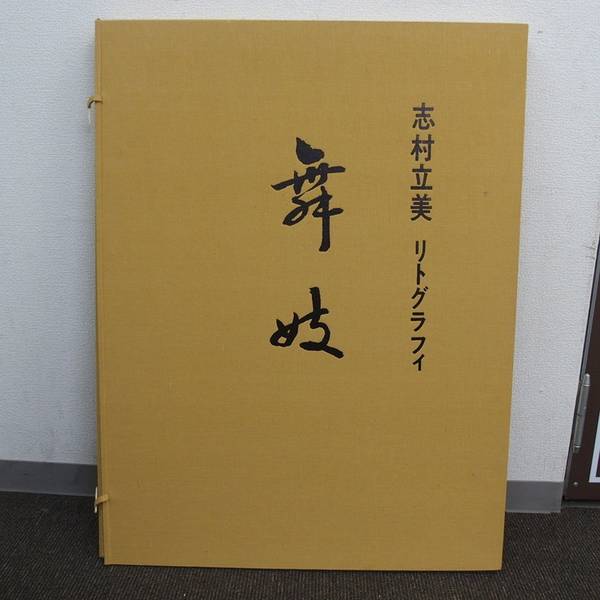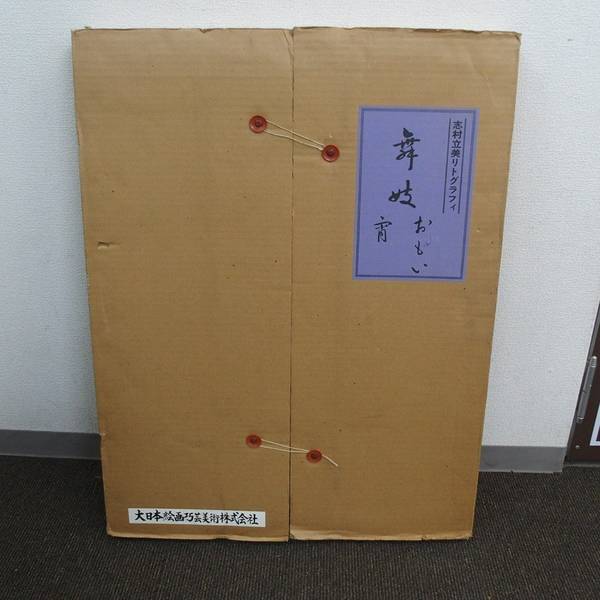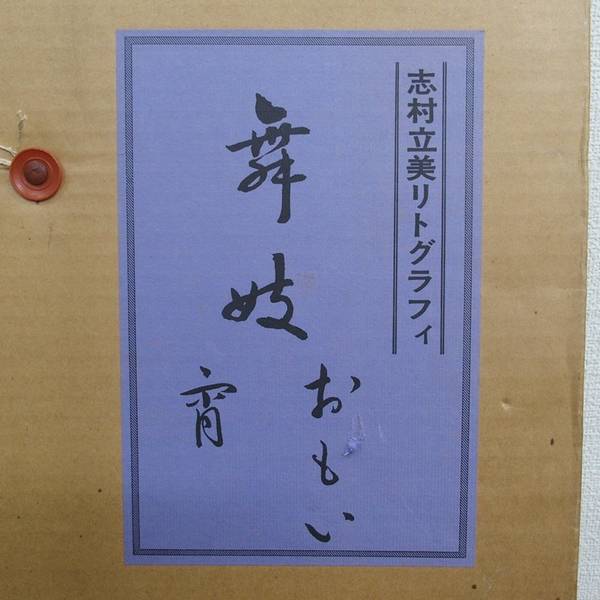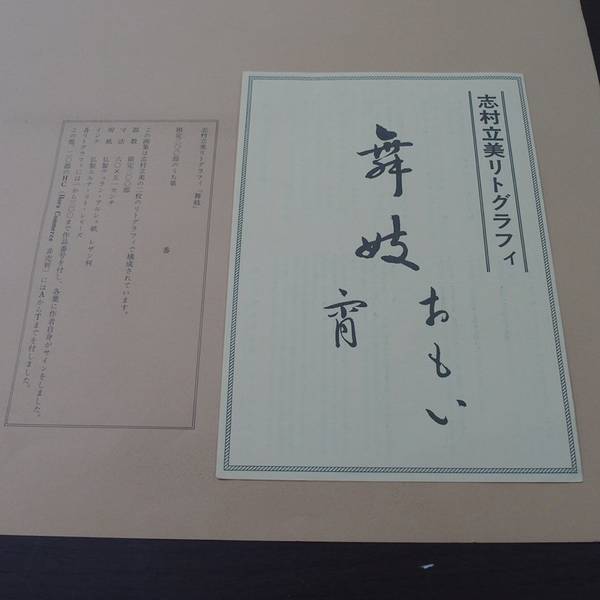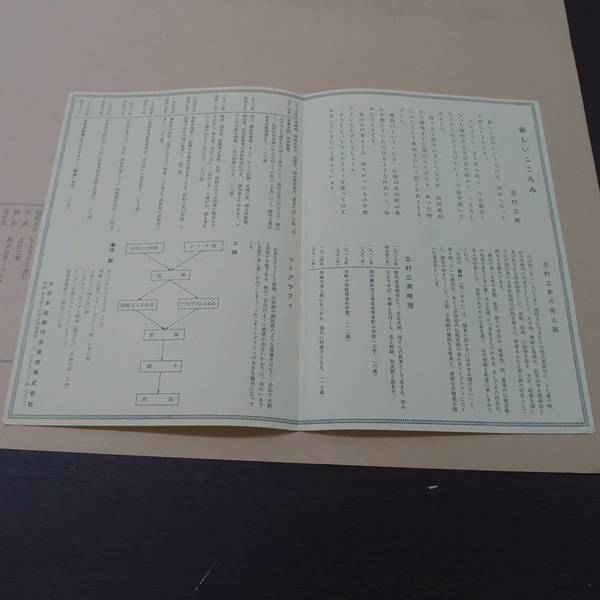| | |
| Artist: | Shimura Tatsumi (1907-1980) — 志村立美 |
| Title: | Early Evening — 宵 |
| Series: | Maiko — 舞妓 |
| Date of first edition?: | 10/05/1977 |
| Publisher (first edition)?: | Dai Nippon Kaigakougei Bijutsu Company — 大日本絵画工芸美術 |
| Publisher (this edition)?: | Dai Nippon Kaigakougei Bijutsu Company — 大日本絵画工芸美術 |
| Medium (first edition): | Lithograph |
| Medium (this edition): | Lithograph |
| Format (first edition): | Double Oban
|
| Format (this edition): | Double Oban |
| DB artwork code: | 47812 |
| Notes (first edition)?: |
Part of a two-print set.
* Maiko means a (young) Japanese dancing girl (of Kyoto). Maiko is most often translated as a trainee geisha. |
|
| Notes (this edition)?: |
| The following information was taken from the original web listing of this artwork. Note that there may be some inaccuracies:
志村立美「舞妓 おもい・宵」リトグラフ 2枚組 共箱 美人画
■商品説明
サイズ(約)
額寸:幅57cm 高さ75cm
画寸:幅38.5cm 高さ46.5cm |
|
| Series Information: |
| This lithographic series contained two scenes: Early Evening, and Thoughts (the title has several meanings including Emotion, Love, Affection, Desire). The set included an album case and a picture frame. |
|
| Artist Bio: |
Tatsumi Shimura is known for designing several striking bijin-ga prints towards the end of the Shin Hanga movement. Born in Takasaki, Gunma, Shimura's real name was Sentaro. In 1921, he began studying art with Yamakawa Saiho, a well-known illustrator. Three years later, he became an apprentice of Saiho's son, Yamakawa Shuho, who was also a bijin-ga artist. Shimura exhibited paintings with Kyodotai in 1927 and with Seikinkai in 1938. He became known for his paintings of beautiful women with long eyelashes and blurred pupils. As a young man, Tatsumi also worked as an illustrator for newspapers, serialized novels, and magazines, notably for the Japanese magazine "Woman's world" (Fujokai). His most famous illustrations were for the novel Tange Sazen by Hayashi Fubo. From 1948 to 1952, Shimura designed several woodblock prints of beauties that were published by Kato Junji. Later he collaborated with the Japanese Institute of Prints (Nihon Hanga Kenkyusho) to create a series called "Five figures of modern beauties" (Gendai bijin fuzoku gotai). These prints were first published in 1953 in an edition size of 200 and contain a thin red rectangular Gihachiro supervisor seal (Okuyama Gihachiro was the founder of the publisher). The series was later reprinted using recarved blocks in the 1960s/70s/80s in other edition sizes of 100, 200, and 300, plus an open (unlimited) edition (see here for further details). They depict Japanese women in traditionally feminine poses and attire. The finely detailed figures are juxtaposed against very simple backgrounds. Tatsumi later published various other gorgeous bijin-ga in double-oban size via the publisher Momose in the 1980s.
志村立美(しむら たつみ、1907年2月17日 - 1980年5月4日)は、日本画家、挿絵画家・ 美人画家である。群馬県高崎市生まれ。本名 仙太郎。群馬県高崎市生まれ。 神奈川県立神奈川工業高等学校図案科を中退して、1924年(大正13年)山川秀峰に入門美人画を修める。 当時、山川秀峰は鏑木清方と伊藤深 水と共に、挿絵での活動もしていた。 山川秀峰の推薦を受け、立美も挿絵での活動を行うようになる。肉筆画も鏑木清方主宰の郷土会、師である山川秀峰、伊東深水らの主宰する青衿会等へ出品をする。 その後主婦の友・婦女 界などの雑誌口絵などでその名を知られるようになり、林不忘原作の丹下左膳の挿絵などで岩田専太郎と並ぶ人気画家となる。晩年、挿絵での活動を休止し、本来の立美の原点である日本画、美人画への回帰をしていく。 出版美術家連 盟会長などをつとめ、1976年(昭和51年)作品集『美人百態』で日本作家クラブ賞を受賞する。「現代女性十二態 花吹雪」 木版 東京国立近代美術館所蔵 |
|



